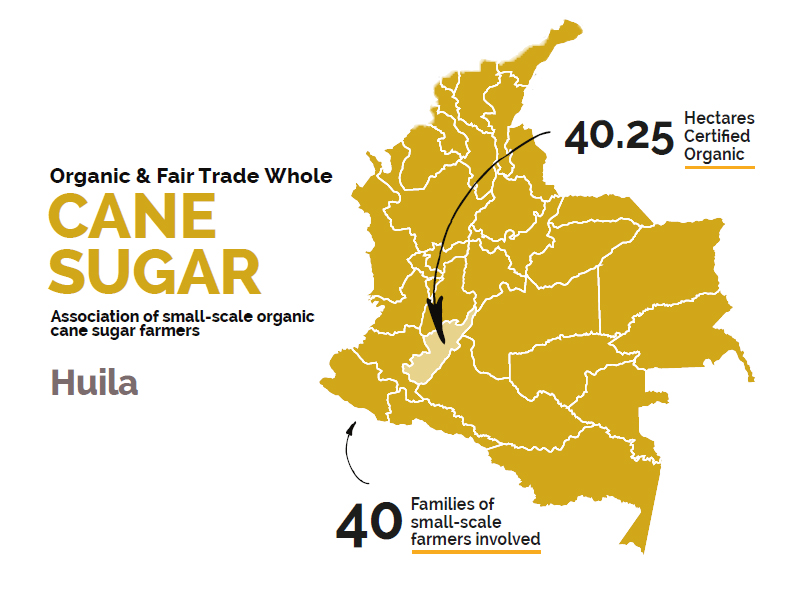The sugar cane for our organic raw cane sugar with its intense molasses flavour is grown in the mountains of the Huila department in south-west Colombia. 40 farming families cultivate an area of 40.25 hectares and together form the small farmers' cooperative Asoopromac.
Huila has a varied landscape with mountains, plains and even a desert. There are six national parks in the region, including the San Augustín Archaeological Park, which has the UNESCO World Heritage designation. Near the park, between 1300 and 1650 metres above sea level, where the indigenous people of Colombia lived more than 2000 years ago, our farmers grow sugar cane.
Sugar cane is harvested throughout the year and processed on site. The cooperative has its own sugar cane mill where all the farmers bring their crops. In the mill, the cane is crushed and the sugar cane juice is extracted. The juice is carefully boiled until it is golden brown and grainy, and then dried.

The raw cane sugar, also known as panela or rapadura, is then transported to Fruandes in Ibagué, where it is granulated and packaged. The fibrous remains of the stalks are burned to heat the boiler and other by-products are used as fertiliser and animal feed. In this way, the plant is fully utilised.
Find out more about the production of raw cane sugar in this two-minute video:
I have been working with Fruandes for five years and this has had a positive effect on me because they guarantee me a stable price and a secure market and train me in the care and management of the harvest. They are good people.